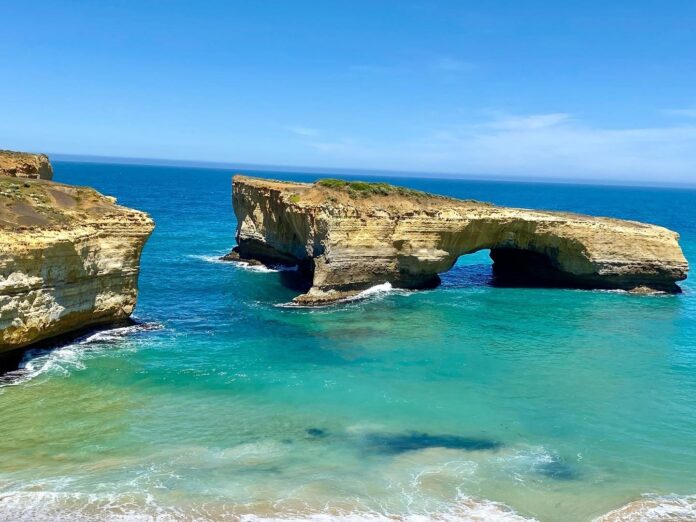A 5500km road trip through four states at peak summer school holiday time – what were we thinking?
We really needed a vacation by the end of it. But when our eldest son moved to Adelaide with his partner late last year, we didn’t want them to spend the festive season alone in a new capital city.
Post-pandemic issues at airports and exorbitant costs of flying in the peak season ruled out air travel for us.
Work commitments meant a tight schedule, adding more angst.
But plotting a road trip from A to B can be fraught with danger at the best of times.
SUBSCRIBE here now for our FREE news feed, direct to your inbox daily.
Not only must you factor in fuel/food/toilet/rest stops and limit daily total driving hours for safety, it’s also best to avoid peak-hour traffic in major cities.
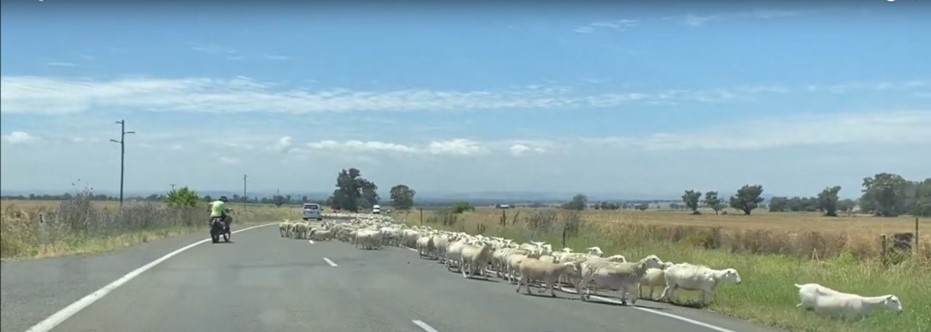
Throw in public holidays or major festive seasons such as Easter and Christmas-New Year – with high demand elevating prices, shrinking accommodation availability and increasing travel times – and your planning task goes into overdrive.
Unforeseen ‘roadblocks’ – from accidents to roadworks, bad weather to major infrastructure construction – cause more headaches once on the bitumen.
So, in the lead-up to Christmas 2022, we found ourselves with the ‘perfect storm’ road trip dilemma.
In the 17 days available, we had to: 1. Get there in one piece; 2. Eat, drink and be merry in Adelaide and surrounds, and on a short break together in the McLaren Vale wine region; and 3. Return home to unpack, wash clothes and recover before starting a new year of work.
Major flooding in Queensland and NSW last year meant bridges and major roads remained cut or under repair, with detours and ‘red lines’ of congestion appearing on traffic apps most days.
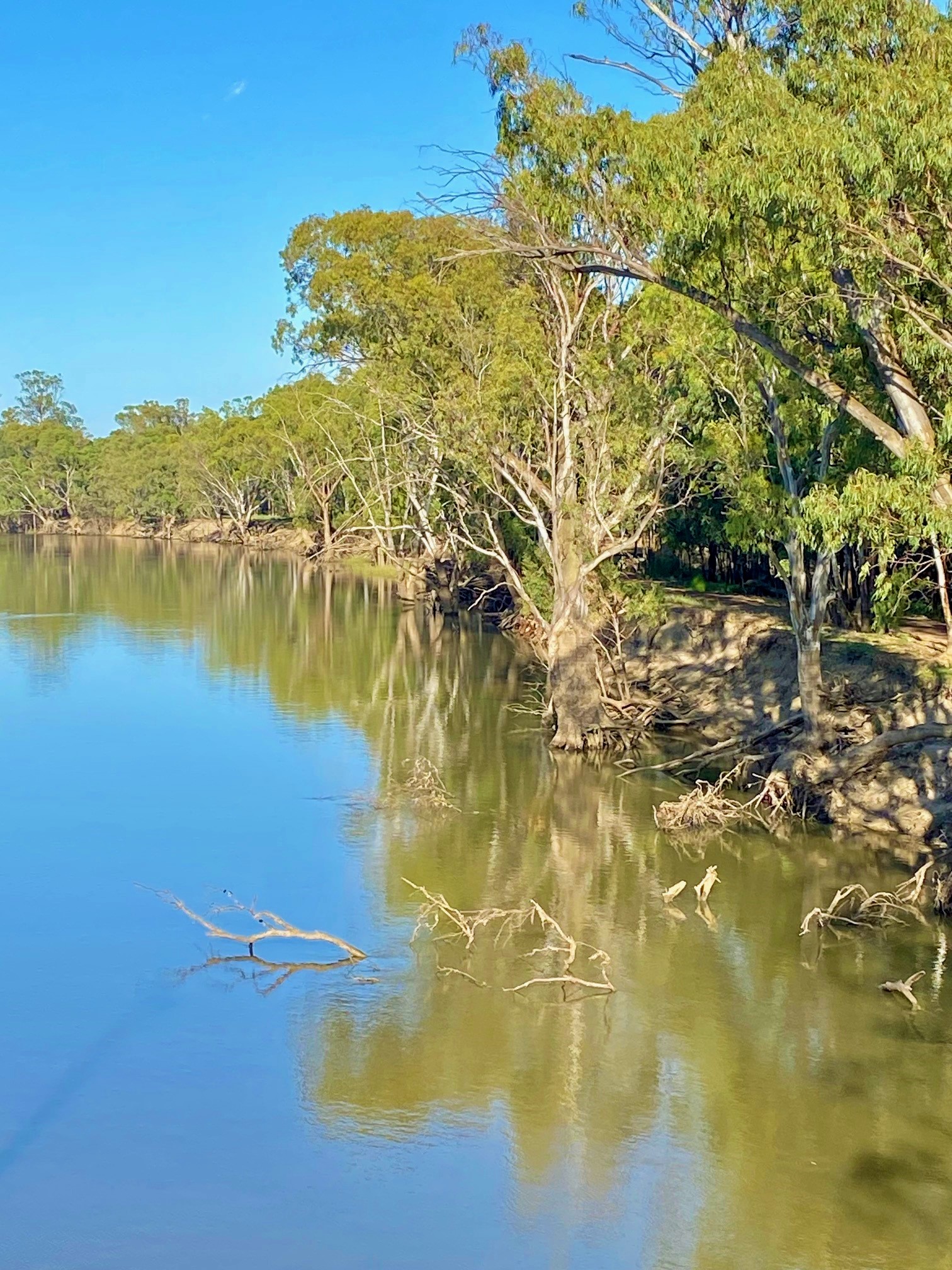
With our trusty Mazda hatchback filled to the brim like the vehicle in Sanitarium’s Up&Go TV ad, we decided to give a wide berth to the usual inland highways (23 hours – via St George and taking the Barrier Highway through Outback towns including Lightning Ridge, Wilcannia and Broken Hill; or the only slightly longer Newell Highway, missing a long-desired visit to Dubbo, Parkes and Forbes).
To guarantee cheap and cheerful accommodation options to and from Adelaide, we settled on the scenic coastal route, as well as larger regional centres inland, then taking a more direct line home.
Love nostalgia? So do we. Help keep more great Coast memories alive by subscribing to our FREE daily news feed. All it requires is your name and email at the bottom of this article.
The decision was a good one. The trip went without a hitch.
The super-fast and reliable NorthConnex nine-kilometre, twin-tube tunnel and Westlink M7 motorway also helped us save time by bypassing Sydney and meeting up with the Hume Highway on our way to Geelong.
From there, we connected dots on the map and were presented with a grand tapestry of topography.
Yes, it was a whirlwind tour, but one with more than a fair share of surprises along the way – from quaint and quirky country pubs and silo art, to coastline panoramas and refreshing bushwalks, riverside picnic spots and nods to proud heritage, as well as landmarks that are quintessentially Australian.
Hour after hour, we discovered the country towns that built Australia from the inside out – the ones that have nourished us with their crops and livestock, persevered against weather extremes and economic downturns, and gave their sons and daughters in defence of our nation at conflicts around the globe.
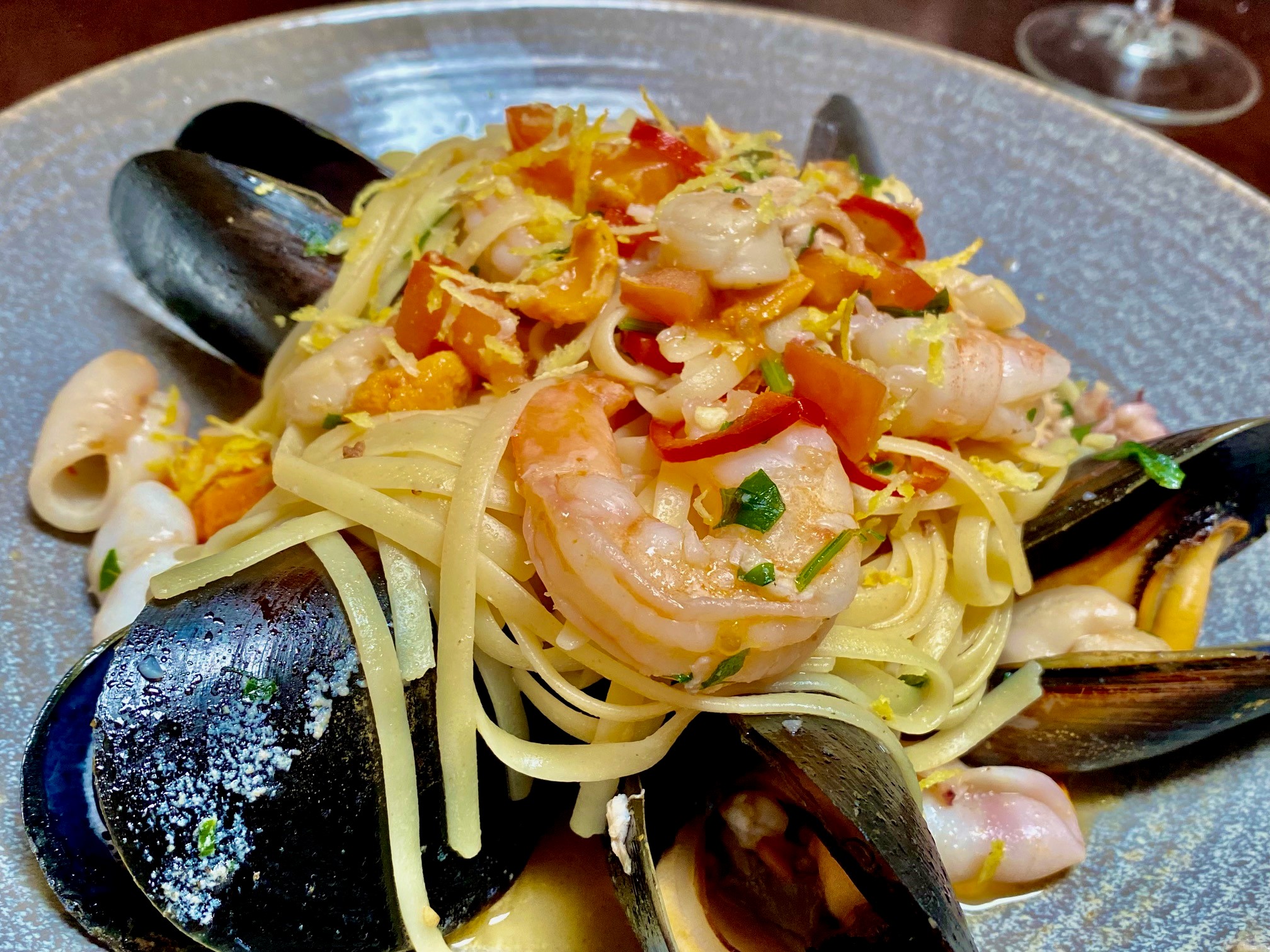
The country hospitality and friendly faces, happy to provide the best local info, were always much appreciated – adding the broad brush strokes of colour to “this wide brown land” that we (and poet Dorothea Mackellar) so dearly love.
The destination was special but, as always, so was the journey.
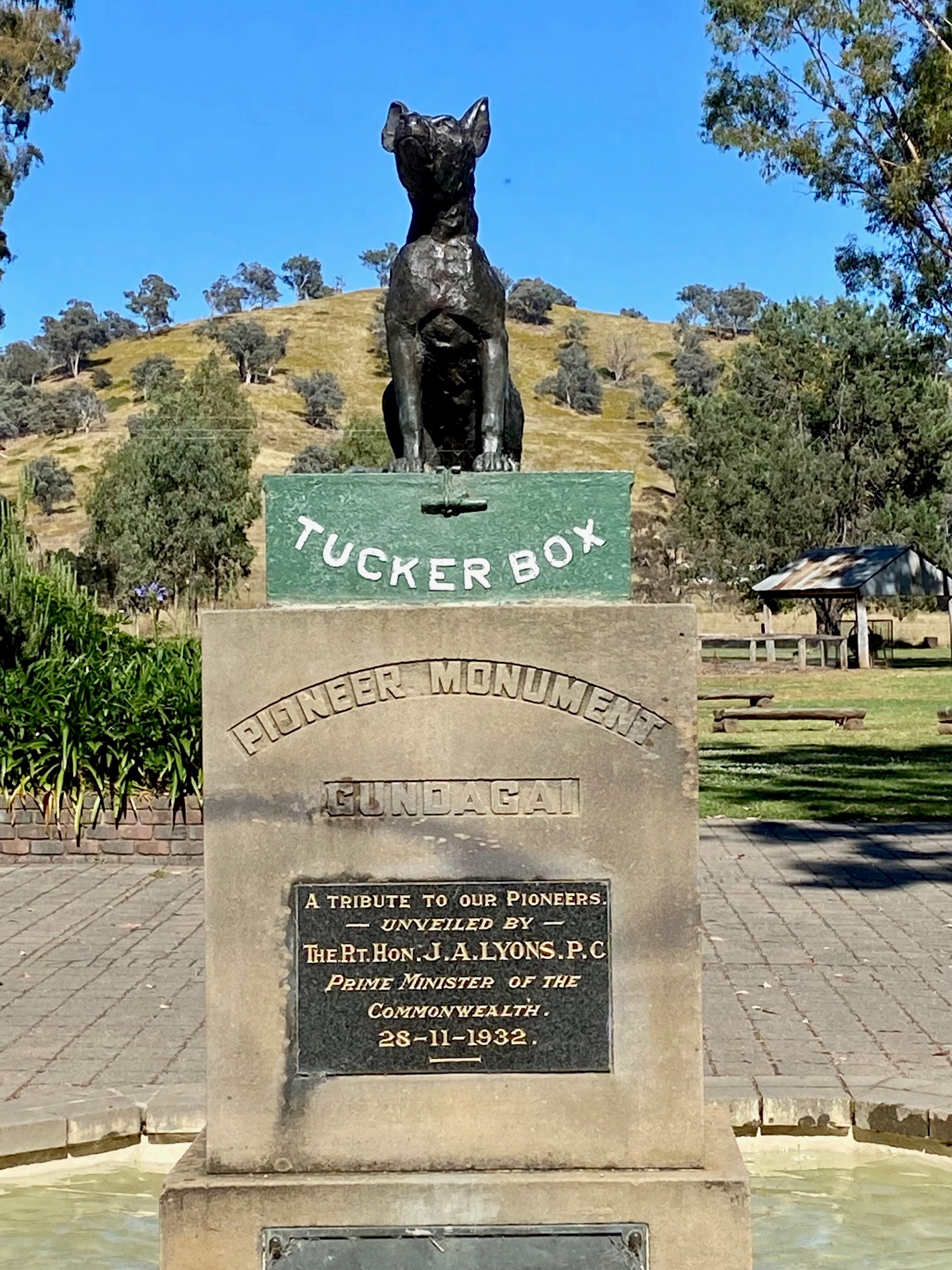
Here are some of our favourite stops.
GUNDAGAI, NSW
With Slim Dusty’s Road to Gundagai on our lips and in our heads, we had to make the detour to Snake Gully – five miles (eight kilometres) from Gundagai, nearly 400km south-west of Sydney – to pay our respects to the Dog on the Tuckerbox.
Inspired by a 19th century poem, the dog monument was modelled by Gundagai stonemason Frank Rusconi and erected in 1932, surviving acts of vandalism to remain “where the gum trees are growin’ and the Murrumbidgee’s flowin’ beneath the sunny sky”.
ALBURY-WODONGA
The Murray River may not be as ‘mighty’ as it once was, but it’s still worth drinking in the view in the border towns of Albury (NSW) and Wodonga (Victoria) (their slogan is: “Two cities, one community”).
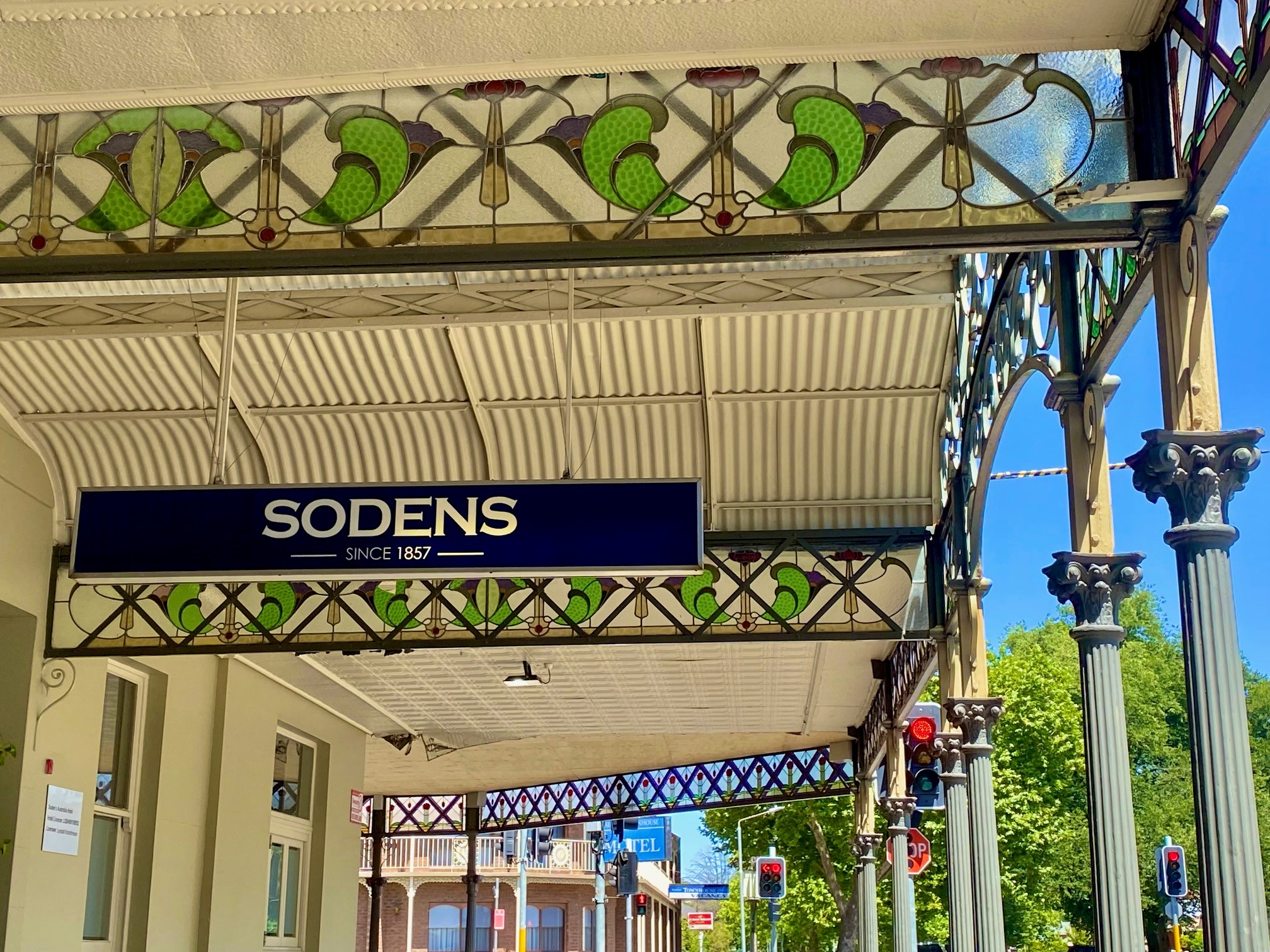
If time permits, glide along in a canoe with the help of Murray River Canoe Hire or breathe in the fresh, clean air in Albury’s Botanic Gardens.
We stretched our legs in Sodens Hotel in Wilson Street, which has been serving townsfolk and travellers (and a few famous equine guests, including Phar Lap) since 1857.
The facade of the heritage-listed hotel remains but the interior was completely gutted and refurbished for its June 2011 reopening.
SEYMOUR, VICTORIA
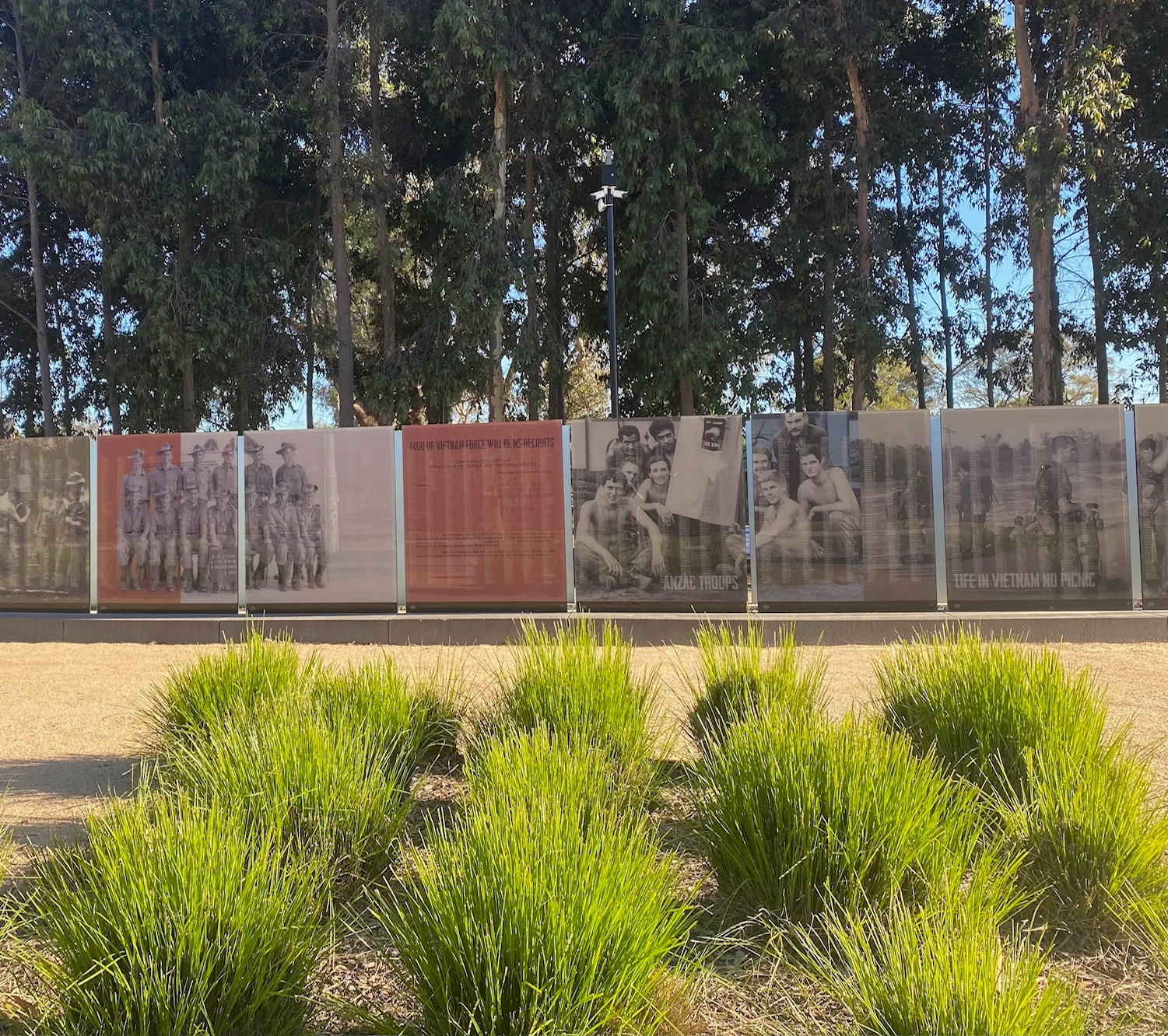
We knew little of Seymour’s scenic beauty or military ties before we put a pin in the map as a ‘do-able’ second overnight stop after Mayfield near Newcastle.
Sitting pretty on the banks of the Goulburn River, with views towards the majestic Tallarook Ranges, the town lies at the junction of the Hume Freeway and Goulburn Valley Highway and is the first destination of the Military Heritage Trail.
One of its claims to fame is being part of the historic Victorian railway network (see a collection of trains are at the Railway Heritage Centre). With its proximity to Puckapunyal army training grounds, Seymour proudly boasts the Australian Light Horse Memorial Park, Vietnam Veterans Commemorative Walk and World War I Memorial Park.
In the early morning light, we moved slowly along the Vietnam Veterans Commemorative Walk that meanders along High Street, looking into photographs of brave young souls eager to do their duty, reading their stories, learning of their heroic acts and knowing many are no longer with us. Fittingly, Seymour and its tranquil, leafy setting are reflected in the wall of memories – a sobering bit of sightseeing amid ‘the machinery of war’ relics.
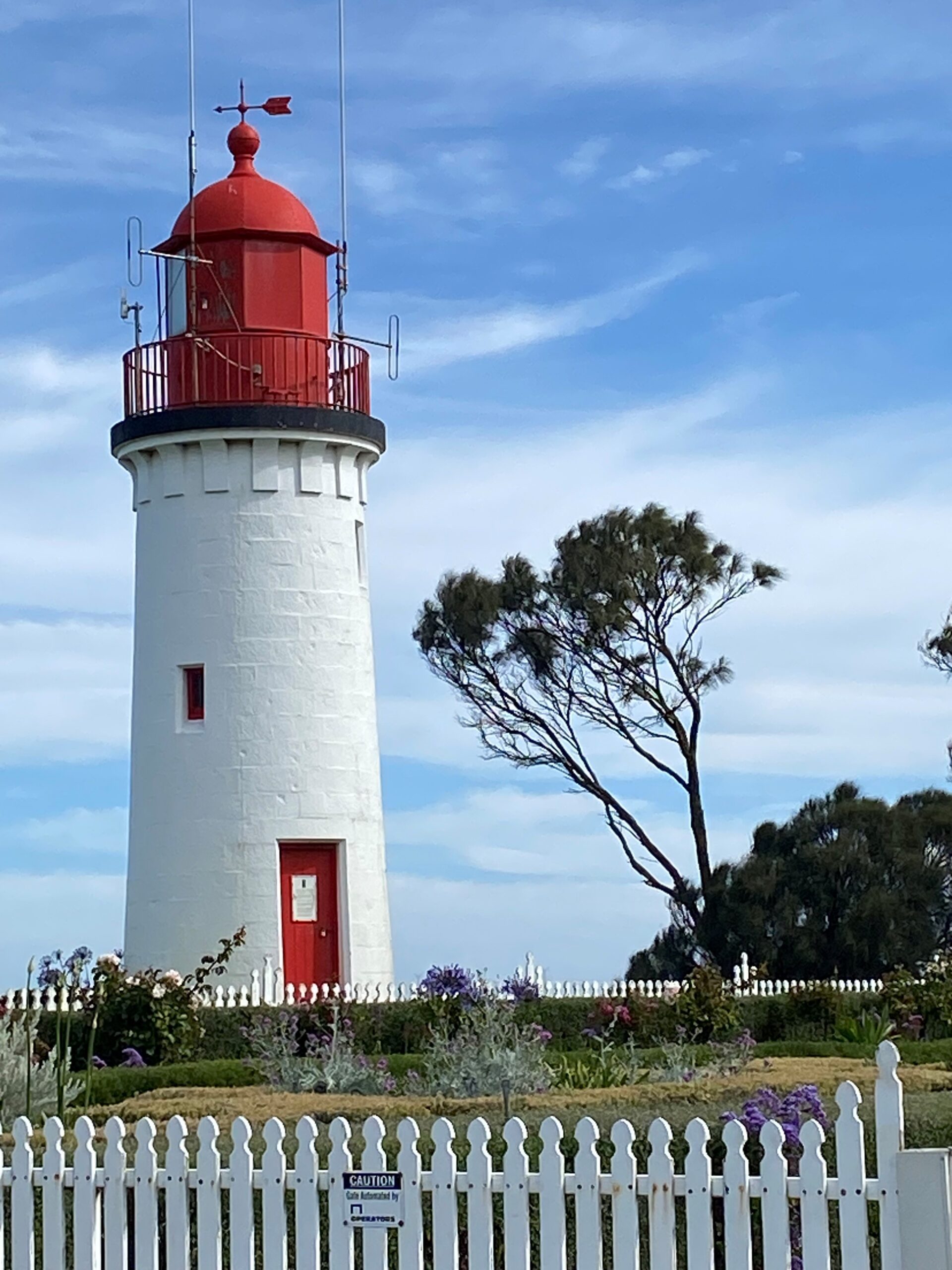
PORTLAND, VICTORIA
Beyond Port Campbell National Park and the Great Ocean Road, this south-west fishing hotspot and the site of Victoria’s first European settlement is certainly a coastal gem.
Many tourists come for the whale, seal and gannet seabird watching but an exhilarating walk along the volcanic cliffs, taking in the port and deserted sandy beaches, is also ideal before accepting the friendly warmth of the Royal Hotel for a hearty dinner.
HAY, NSW
We plotted a different course on the homeward journey, taking in the glorious nothingness of the Hay Plain in south-western New South Wales that has a surprising number of bird species.
The saltbush and cottonbrush shrublands we encountered to the south and north of Hay almost guarantee emu spotting.
A stroll away from our accommodation at Bidgee Motor Inn, the New Crown Hotel had us chatting for hours with locals, joining in the afternoon raffles before sitting down to a dining room feast.
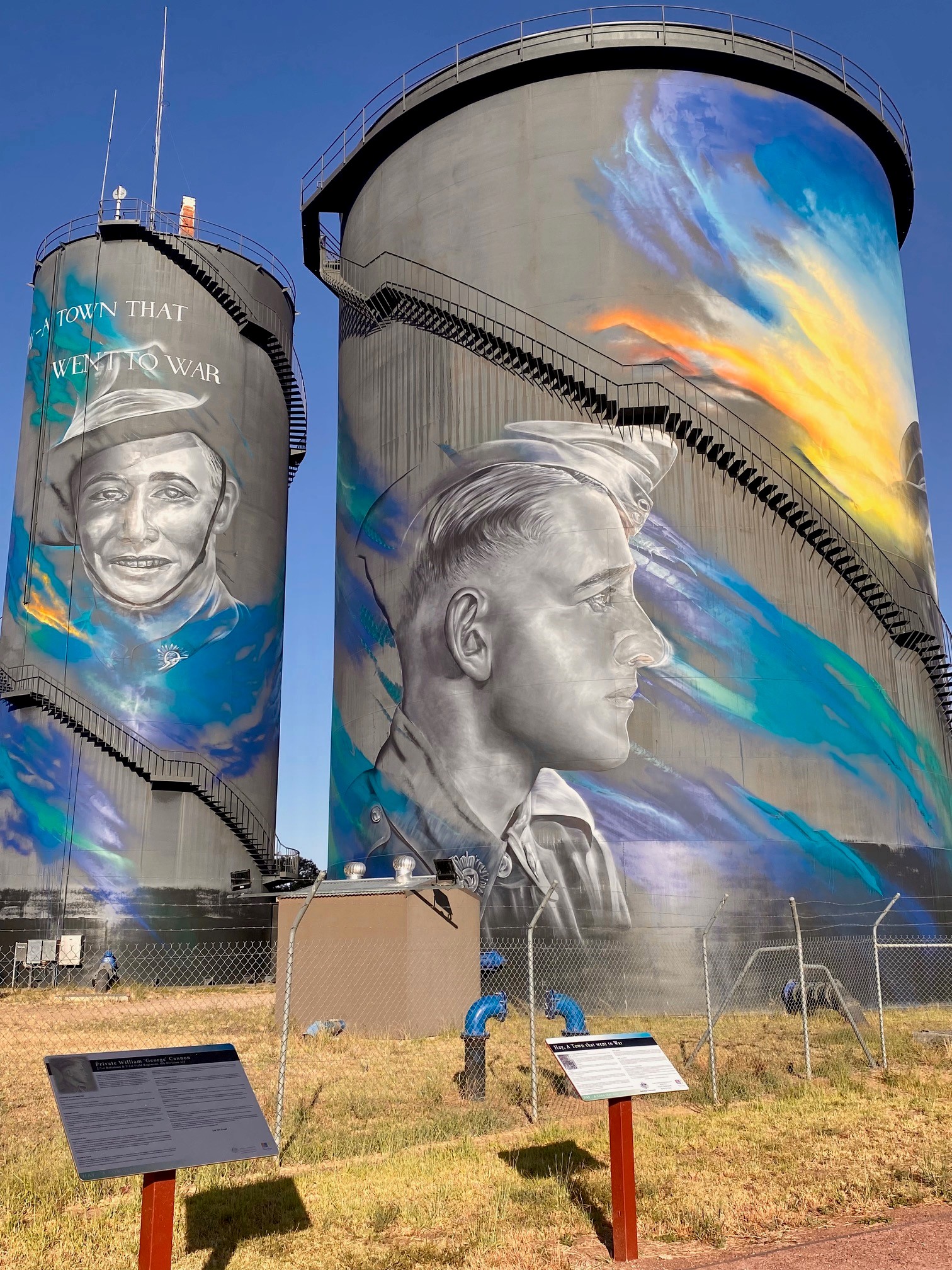
An 8am walk around the ‘heroes of Hay’ artwork on the water tower, and nearby reflections of the treeline on the Murrumbidgee River, made for a great start to our driving day.
For the two-hour-and-40-minute trip to West Wyalong, we barely saw another vehicle.
But we did have to be wary of potholes of varying depths and the kamikaze birds, dragonflies and butterflies on the mostly straight road of the Mid Western Highway, with few trees but plenty of golden spinifex and dry paddocks.
It may not be as spectacular as The Great Ocean Road, but the route is every bit as fascinating in its own way.
BATHURST, NSW
It would have been un-Australian to visit Bathurst and not drive the 6.213km Mount Panorama motor racing circuit.
This is the home of the Bathurst 1000 motor race each October (the other race that stops a nation), and the Bathurst 12 Hour event in February.
When no racing events are being run, this beautifully maintained track reverts to a public road anyone can drive, walk or cycle – as long as you strictly keep to the 60kmh speed limit. We can only imagine powering through Conrad Straight where V8s can reach 300km/h.
But it’s worth tackling the circuit just to take in Brock’s Skyline – where motorists seemingly drive into oblivion before being presented with that magnificent panorama of the region, before testing themselves on The Esses (S bends) in descending the mountain.
THE BLUE MOUNTAINS, NSW
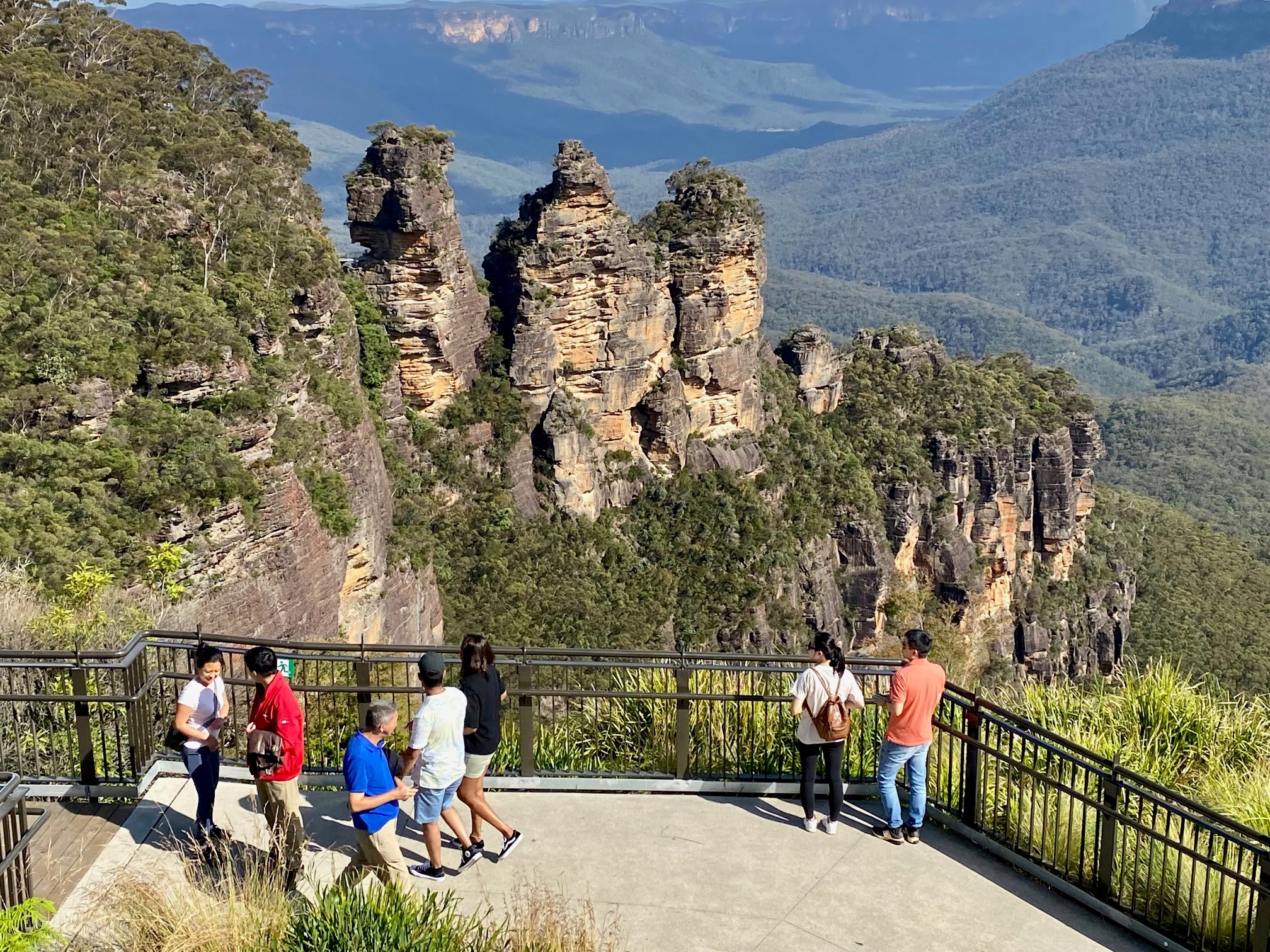
Echo Point in the Blue Mountains was our destination of choice for New Year’s Eve: a postcard icon yet relatively quiet for a good night’s sleep.
Echo Point Lookout is the best viewing point for the Three Sisters: a trio of weathered sandstone peaks, formed thousands of years ago through erosion, among the cliffs of the Jamison Valley.
Find your spot on the extensive viewing platform and stretch your gaze out towards the Ruined Castle and Mount Solitary.
At 7am on New Year’s Day, we almost had that breathtaking view all to ourselves.
Nearby, The Lookout at Echo Point – with its Bar NSW and The Milkbar venues – is a great late-afternoon spot to order shared plates and toast sunset from the shady veranda. Head to the Visitor Information Centre for maps and information on the many walks and nature experiences in the area.
Just through the archway next to the centre, the short Three Sisters Walk offers varying perspectives of the weather-eroded sandstone turrets, nearly a kilometre above sea level, and the ever-changing views of the “blue” valley that gives the area its name.
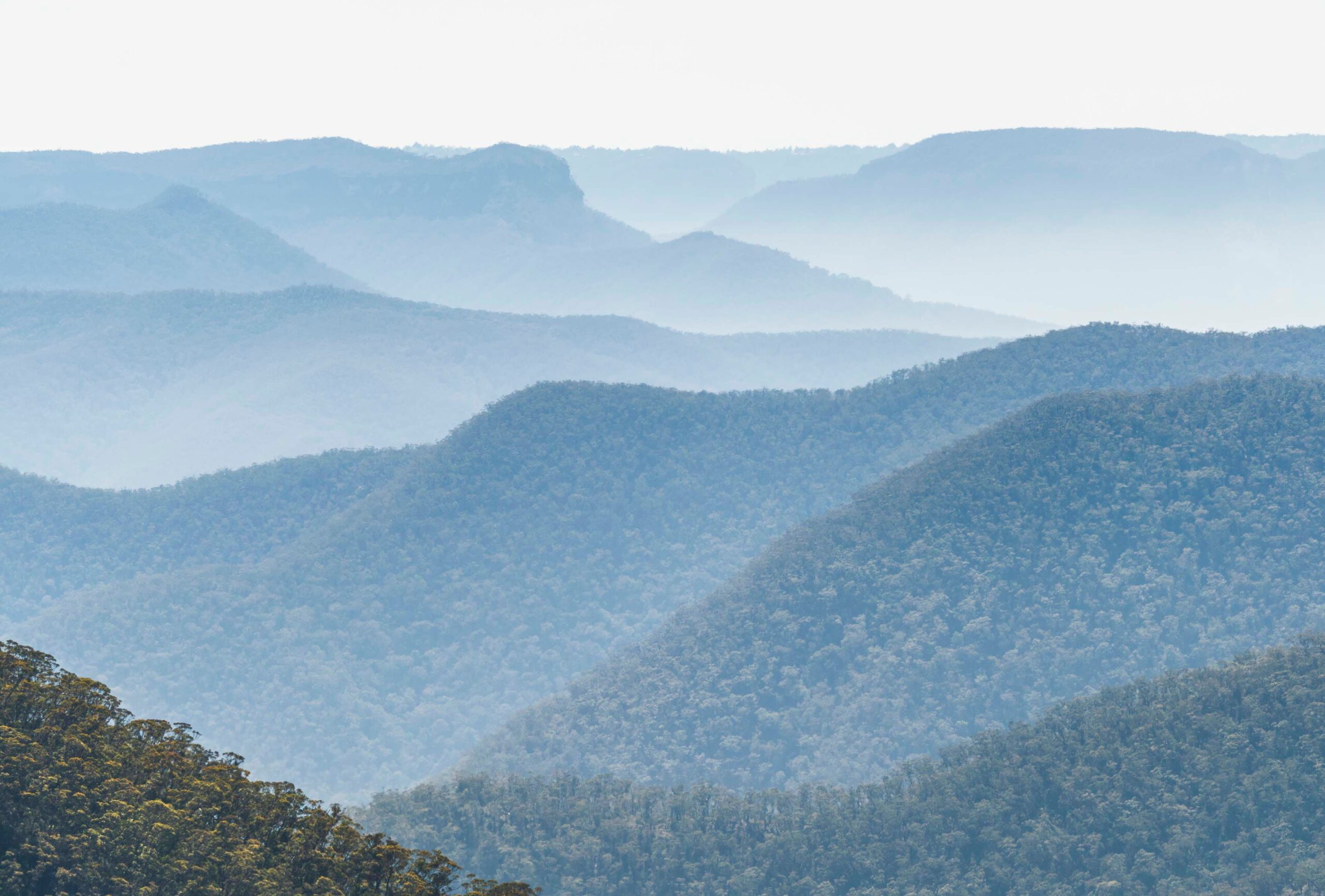
After a 26-year absence, Echo Point brought back happy memories of our year-long trip around Australia and travelling on the original Scenic Railway, built in the late 19th century.
An award-winning redevelopment in 2013 now sees the train descend an exhilarating 310m route through a cliff tunnel before emerging on the floor of the valley. The 52-degree (128 per cent) incline in open terrain is the steepest passenger railway in the world. Passengers can even choose their thrill level, bravely adjusting their seat to Cliffhanger (64-degree incline) if they so desire.
MACLEAN, NSW
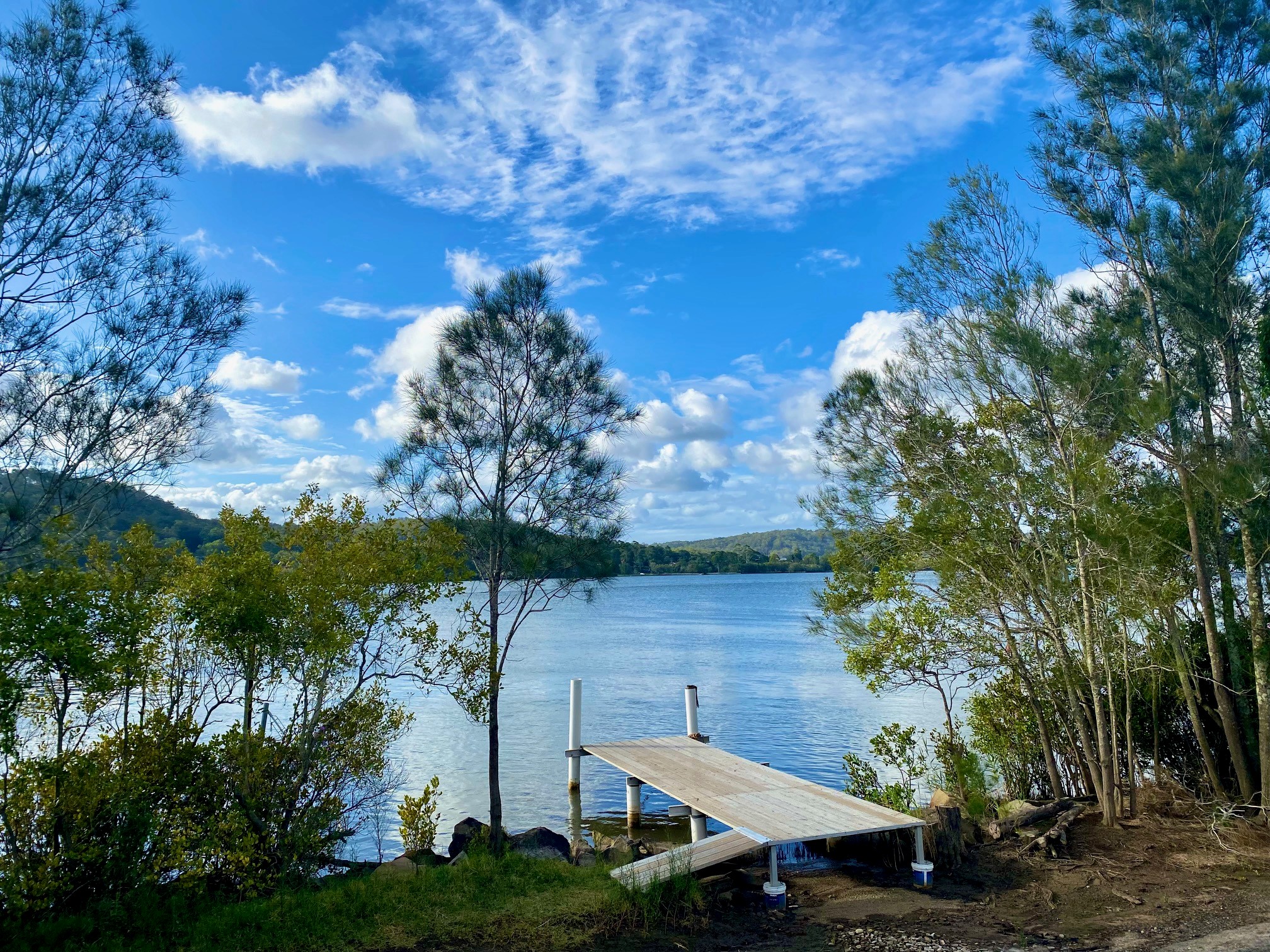
With no last-minute accommodation available, our Nambucca Heads sojourn on the way home became an extended lunch break before deciding to head further north to a riverside rest at Maclean.
Lying on the Clarence River in the Northern Rivers region, the popular boating and fishing spot also likes to call itself “the Scottish town of Australia” and its proud heritage can be found on power poles boasting family names and tartans.
Its credentials are secured by the Highland Gathering it has hosted for the more than a century at Easter, when the sound of bagpipes fills the air and the parade fanfare brightens the streets (the next is March 29-30, 2024).
Maclean Lookout, two kilometres from the centre of town, brings the surrounding farmland and hinterland into view. Add in the Pinnacle (a balancing rock formation and important Aboriginal cultural heritage site), plus a picnic in view of McFarlane Bridge or fish’n’chips by the water – and what more do you need for a relaxing final hurrah for the road trip?
THE GREAT OCEAN ROAD, VICTORIA
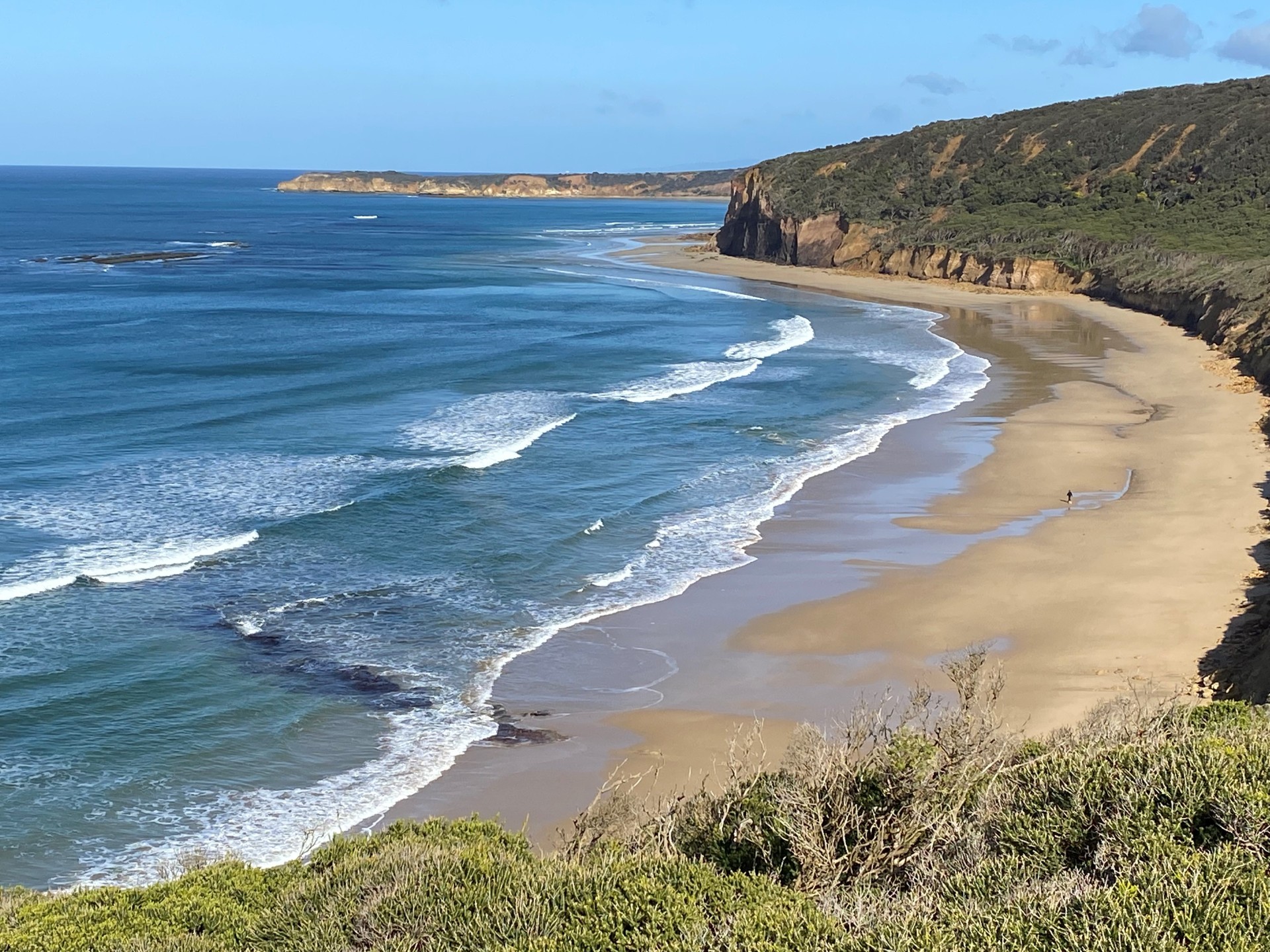
One of the world’s most epic drives, the 240km Great Ocean Road stretches along the south-eastern coast of Australia between the Victorian cities of Torquay and Allansford.
The drive takes in the Victorian Surf Coast and key towns of Aireys Inlet, Anglesea, Lorne, Torquay and Winchelsea.
Call in at Torquay to breathe in the salt air and grab a welcome coffee and takeaway treat from any number of cafes and bakeries before a quick 10-minute drive to the dramatic coastline of the Bells Beach surfing Mecca.
The Rip Curl Pro Bells Beach, which began in 1962, is the world’s longest continuously running pro surfing competition, held at Bells Beach around Easter each year. But any sniff of a wave in the air attracts paddlers young and old, with their escapades easily viewed from the cliff-top car park.
About 20 minutes further south, Point Roadknight Beach at Anglesea is an ideal spot to stop for a picnic lunch or perhaps dinner on the deck of the Anglesea Motor Yacht Club that has a proud history of sailing dating back to 1961.
Continue on to Urquhart Bluff, which is sure to beckon you for a surf or refreshing swim, before more breathtaking views at Split Point Lighthouse and nearby Fairhaven Surf Club. Photo opportunities lie around every bend.
One minute, you’re driving right next to the sand and tessellated pavement; the next, you are feeling on top of the world with yet another elevated view such as Mount Defiance Lookout or above Whalebone Creek.
APOLLO BAY, VICTORIA
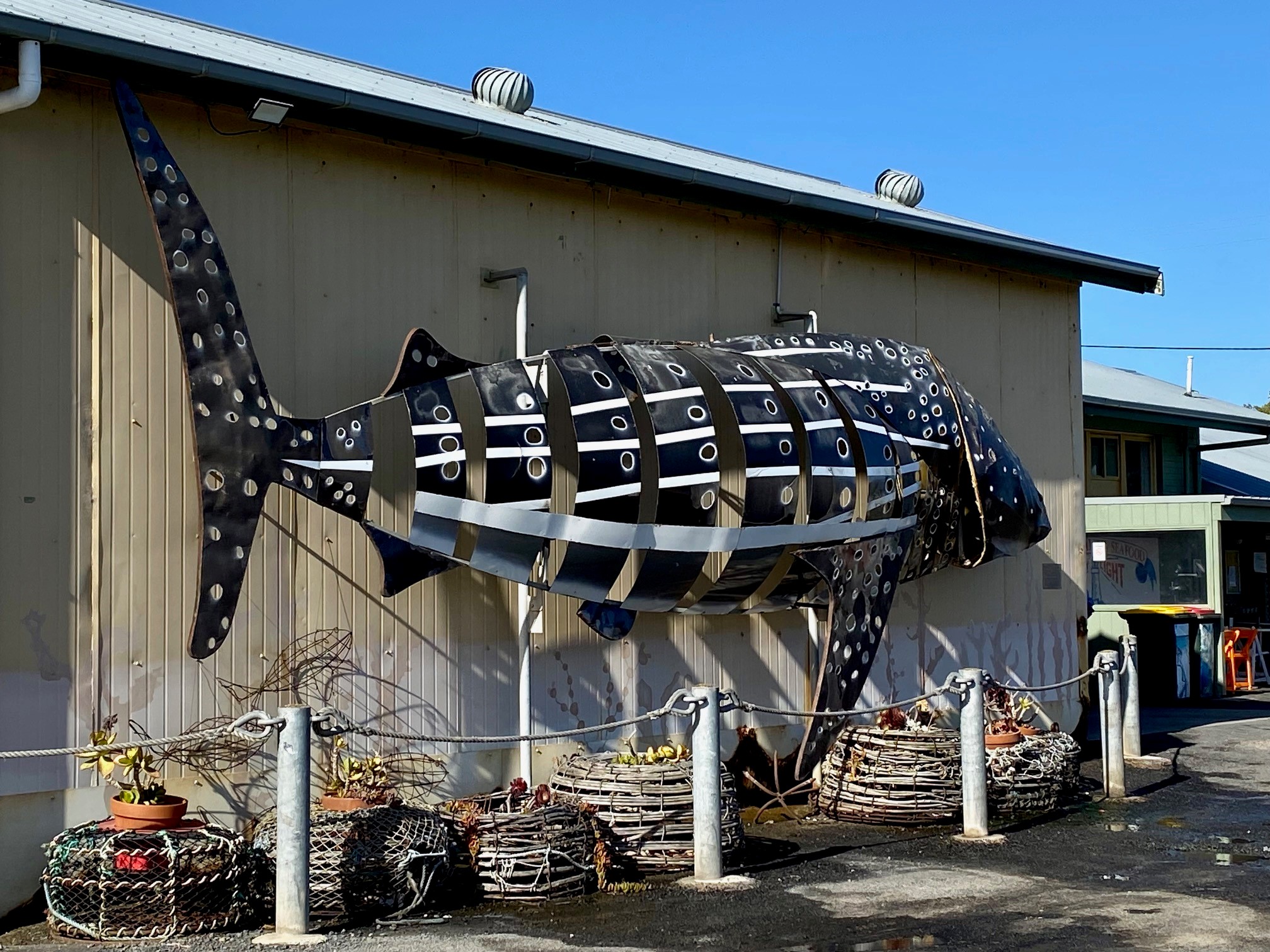
Lorne ticks all the boxes for a bustling seaside town but Apollo Bay, at almost the halfway point of the Great Ocean Road drive, is our slightly quieter option for the night.
With a nature strip instead of high-rise on the absolute beachfront and a well-patronised, free skateboard park beside the boardwalk, this is much more our pace.
After a short walk from our hotel room, Apollo Bay Hotel was calling our name for afternoon drinks.
The decision to head across the road for dinner at Casalingo in Moore Street, however, proved to be one of the foodie highlights of the trip. We started with juicy Coffin Bay oysters and garlic ciabatta and moved on to linguini marinara and roasted duck, washed down with selections from an impressive wine list including options from Italy and France, as well as Victorian and South Australian delights. A world-class foodie experience.
THE TWELVE APOSTLES AND BEYOND
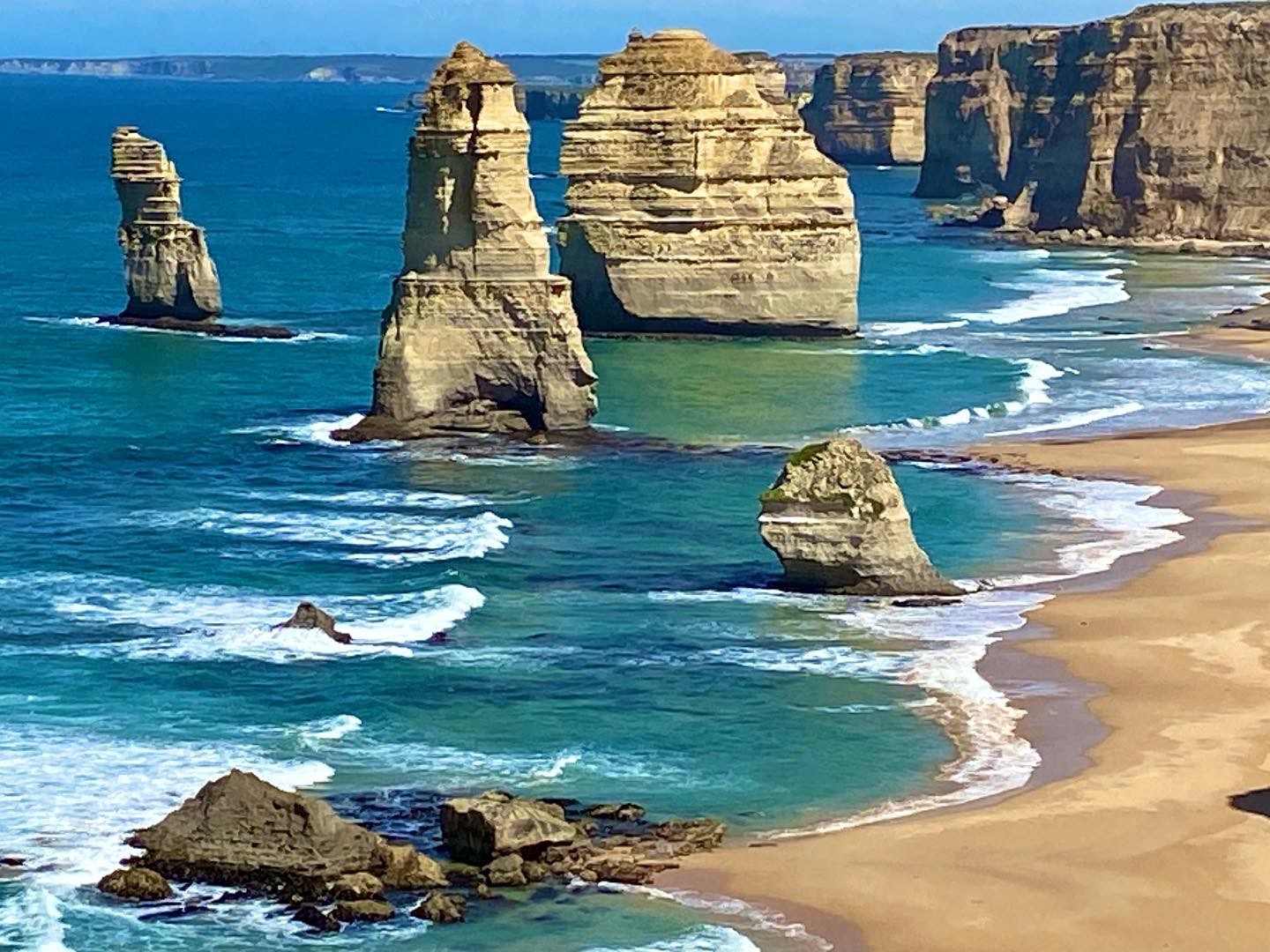
Even on a tight schedule, the ins and outs of natural attractions weathered into today’s Twelve Apostles is worth any frustrating search for a carpark space or battle with the tourist bus crowds.
You can always take that ‘perfect’ selfie spot and have a moment to yourself if you bring along a little patience.
The last time we were here, the dark clouds and threatening showers created their own foreboding drama in our photographs. This time, we had the most majestic sunshine to make the colours of the limestone stacks rising out of the Southern Ocean’s great “washing machine” (they are best viewed at sunset when the yellow rock gradually turns from red to orange).
Interestingly enough, there were never 12 rock stacks and only seven remain, with six visible in the classic tourist photo (the seventh is several metres away from the corner of the main viewing platform). Once named “Sow and Piglets”, nine rock stacks were known to exist at the beginning of the 21st century but two have since collapsed: in 2005 and 2009.
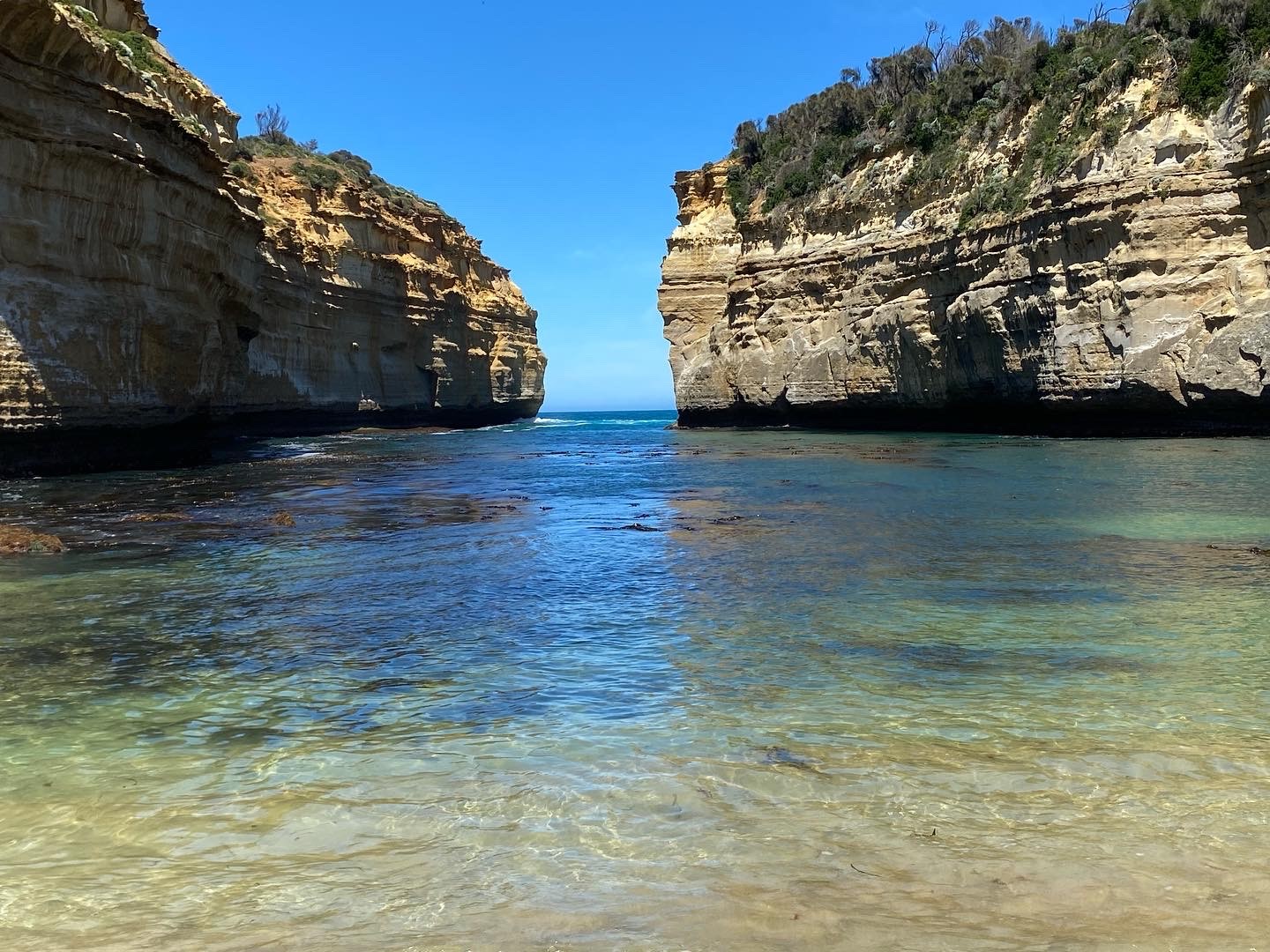
But my favourite thing to do on the Great Ocean Road is to stand on the stunning beach, just a few minutes’ away from the Twelve Apostles, at Loch Ard Gorge.
Surrounded by towering sandstone cliffs, this is the site of the greatest tragedy on the aptly named Shipwreck Coast when the Loch Ard ran aground in 1878, crashing into Mutton Bird Island (the ‘Sow’ of the Sow and Piglets).
A little further on and shaped by the Southern Ocean swells, London Bridge originally was named because of its natural archway and tunnel. But just like the children’s nursery rhyme, London Bridge came falling down on January 15, 1990.
After generations had experienced the thrill of walking across it, the collapse stranded two tourists who had to be rescued by helicopter from the now isolated arch.
In the past, we have suffered coastline fatigue. But this time, we ventured further west – rewarded by having breathtaking views of the Bay of Martyrs and the Bay of Islands all to ourselves.
- The writer paid for all expenses.
Help us deliver more news by registering for our FREE daily news feed. All it requires is your name and email at the bottom of this article.


